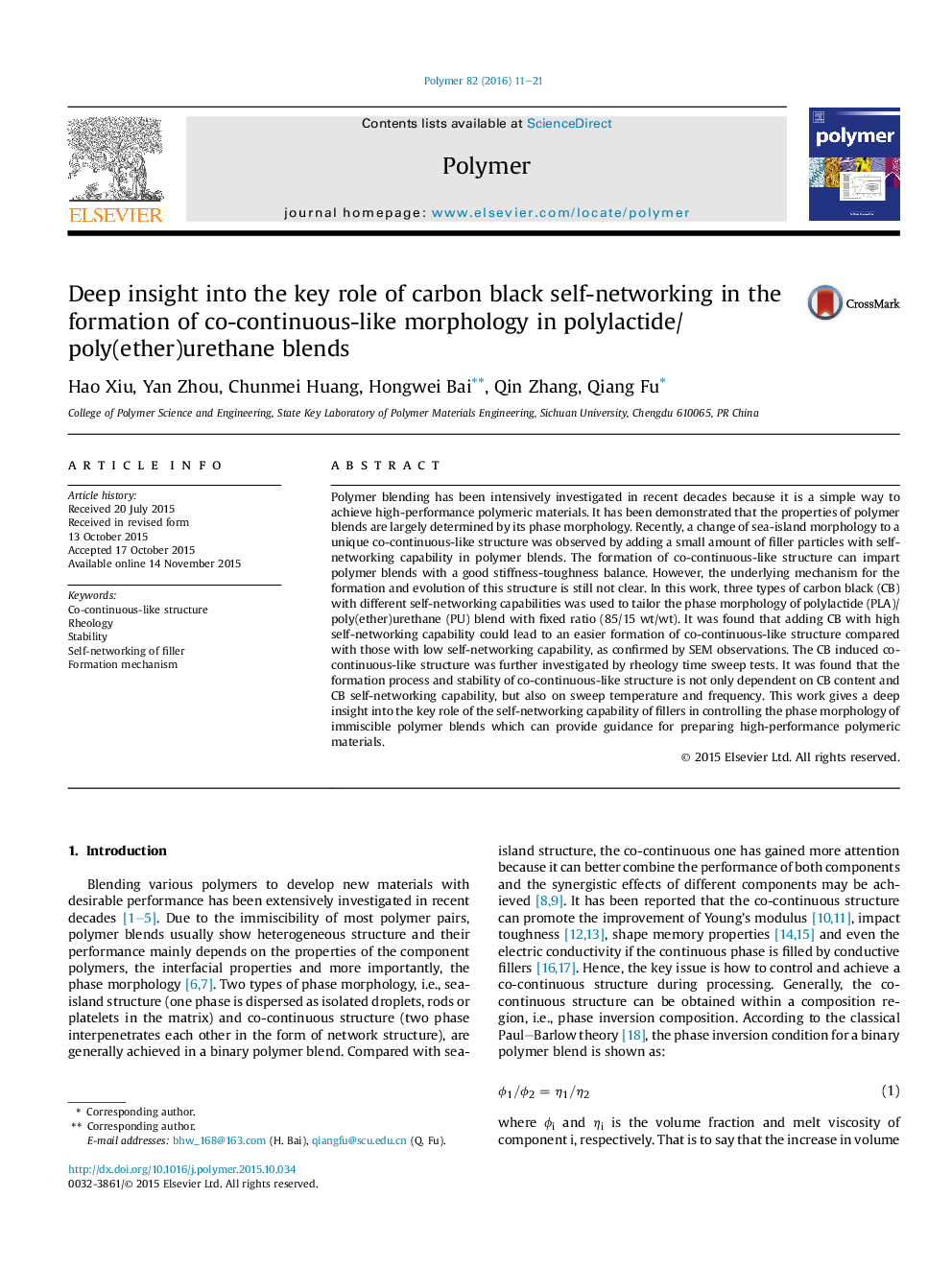| کد مقاله | کد نشریه | سال انتشار | مقاله انگلیسی | نسخه تمام متن |
|---|---|---|---|---|
| 5179407 | 1502524 | 2016 | 11 صفحه PDF | دانلود رایگان |
- Three kinds of CB with different self-networking capabilities were used to tailor the phase morphology of PLA/PU blends.
- CB with high self-networking capability could lead to an easier formation of more stable co-continuous-like structure.
- The kinetics of CB self-networking in PLA/PU blends was studied by rheology.
- The rheology-self-networking of fillers-phase morphology triadic correlation in fillers-filled polymer blends was established.
Polymer blending has been intensively investigated in recent decades because it is a simple way to achieve high-performance polymeric materials. It has been demonstrated that the properties of polymer blends are largely determined by its phase morphology. Recently, a change of sea-island morphology to a unique co-continuous-like structure was observed by adding a small amount of filler particles with self-networking capability in polymer blends. The formation of co-continuous-like structure can impart polymer blends with a good stiffness-toughness balance. However, the underlying mechanism for the formation and evolution of this structure is still not clear. In this work, three types of carbon black (CB) with different self-networking capabilities was used to tailor the phase morphology of polylactide (PLA)/poly(ether)urethane (PU) blend with fixed ratio (85/15Â wt/wt). It was found that adding CB with high self-networking capability could lead to an easier formation of co-continuous-like structure compared with those with low self-networking capability, as confirmed by SEM observations. The CB induced co-continuous-like structure was further investigated by rheology time sweep tests. It was found that the formation process and stability of co-continuous-like structure is not only dependent on CB content and CB self-networking capability, but also on sweep temperature and frequency. This work gives a deep insight into the key role of the self-networking capability of fillers in controlling the phase morphology of immiscible polymer blends which can provide guidance for preparing high-performance polymeric materials.
139
Journal: Polymer - Volume 82, 15 January 2016, Pages 11-21
